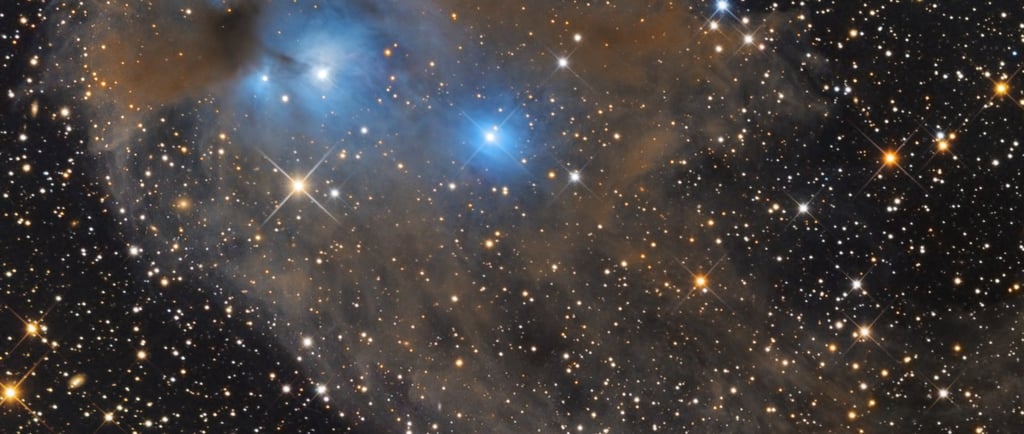NGC 5367: A Stunning Reflection Nebula


Introduction to NGC 5367
NGC 5367 is a captivating reflection nebula located approximately 2,500 light years away in the constellation Centaurus. This astronomical wonder encapsulates the beauty and complexity of the universe, providing both amateur stargazers and seasoned astronomers with a stunning visual spectacle. The nebula is intricately embedded within the cometary globule CG 12, making it a fascinating subject for study and exploration.
Characteristics of NGC 5367
The reflection nebula NGC 5367 derives its luminous appearance from the light emitted by nearby stars, particularly the double star system designated H4636, which is composed of type B4 and B7 stars. These hot and massive stars are responsible for illuminating the dust and gas surrounding them, creating an array of colors and shapes. The blue hues typically observed in reflection nebulae result from the scattering of light off the dust particles present in the region.
A Deeper Understanding of Reflection Nebulae
Reflection nebulae like NGC 5367 serve as important indicators in our understanding of stellar formation and the lifecycle of stars. Unlike emission nebulae, which are hot enough to emit their own light, reflection nebulae shine as a result of the light they receive from nearby stars. This distinction is crucial for astronomers when categorizing different types of nebulae and their functions in the galaxy.
Studying NGC 5367 and similar reflection nebulae provides insights into the interaction between light and interstellar material, allowing for a greater comprehension of cosmic processes. The dust and gas found in these nebulae play a vital role in star formation, serving as the building blocks for new stars, planets, and solar systems.
In recent years, observations of NGC 5367 have been enhanced by advancements in telescope technology and imaging techniques. Observatories equipped with powerful instruments are now able to capture intricate details of these nebulae and explore their features with unprecedented clarity.
Furthermore, researchers continue to investigate the dynamics of the double star system H4636 and its influence on the surrounding nebula. The interactions between the stars' radiation and the dense material of NGC 5367 offer valuable data for understanding stellar evolution and the fate of massive stars.
In conclusion, NGC 5367 stands as an exemplar of the beauty and complexity inherent in our universe. Its classification as a reflection nebula embedded within a cometary globule reveals the interconnectedness of stellar phenomena. As technology continues to evolve, the potential for further discoveries in this captivating region of Centaurus remains limitless.
